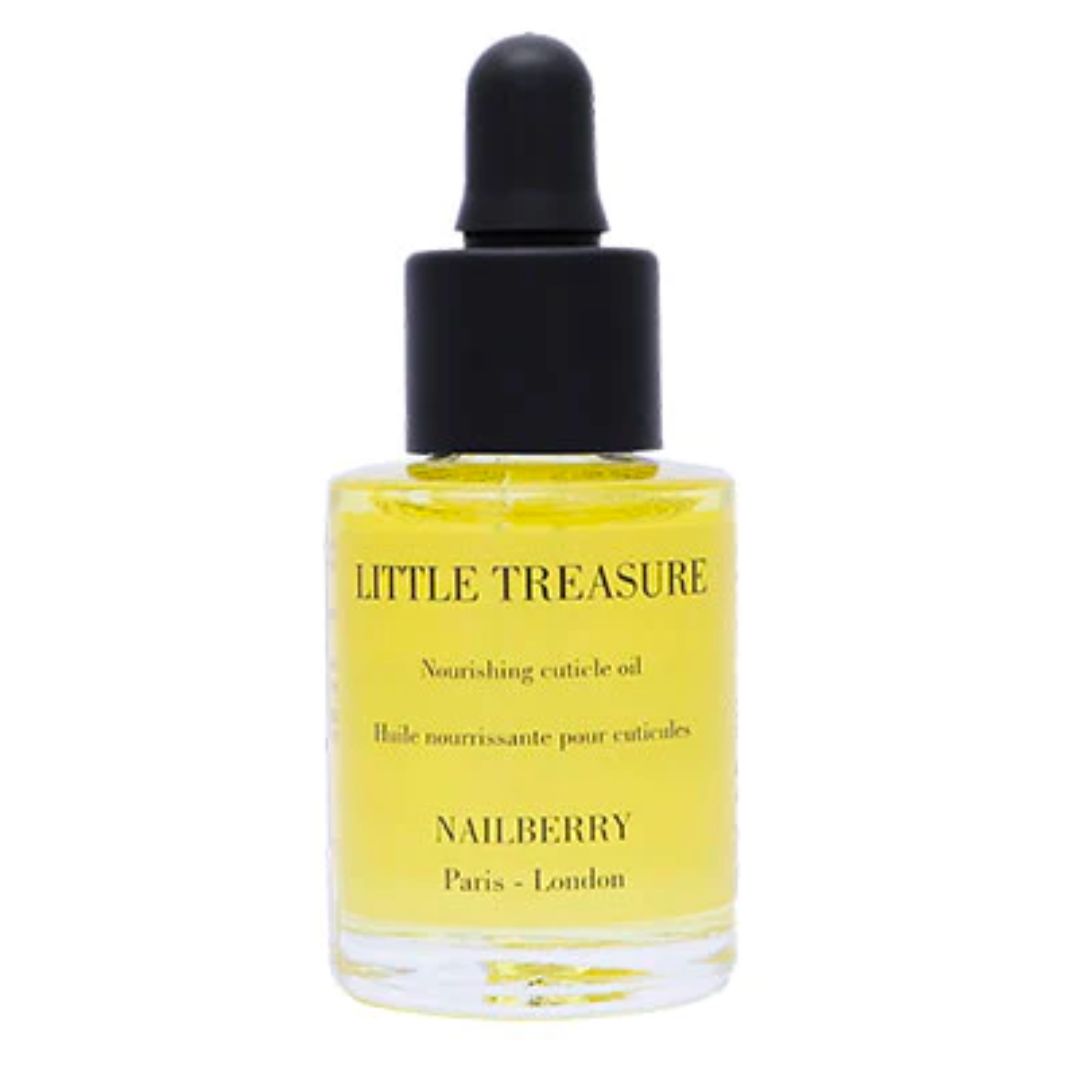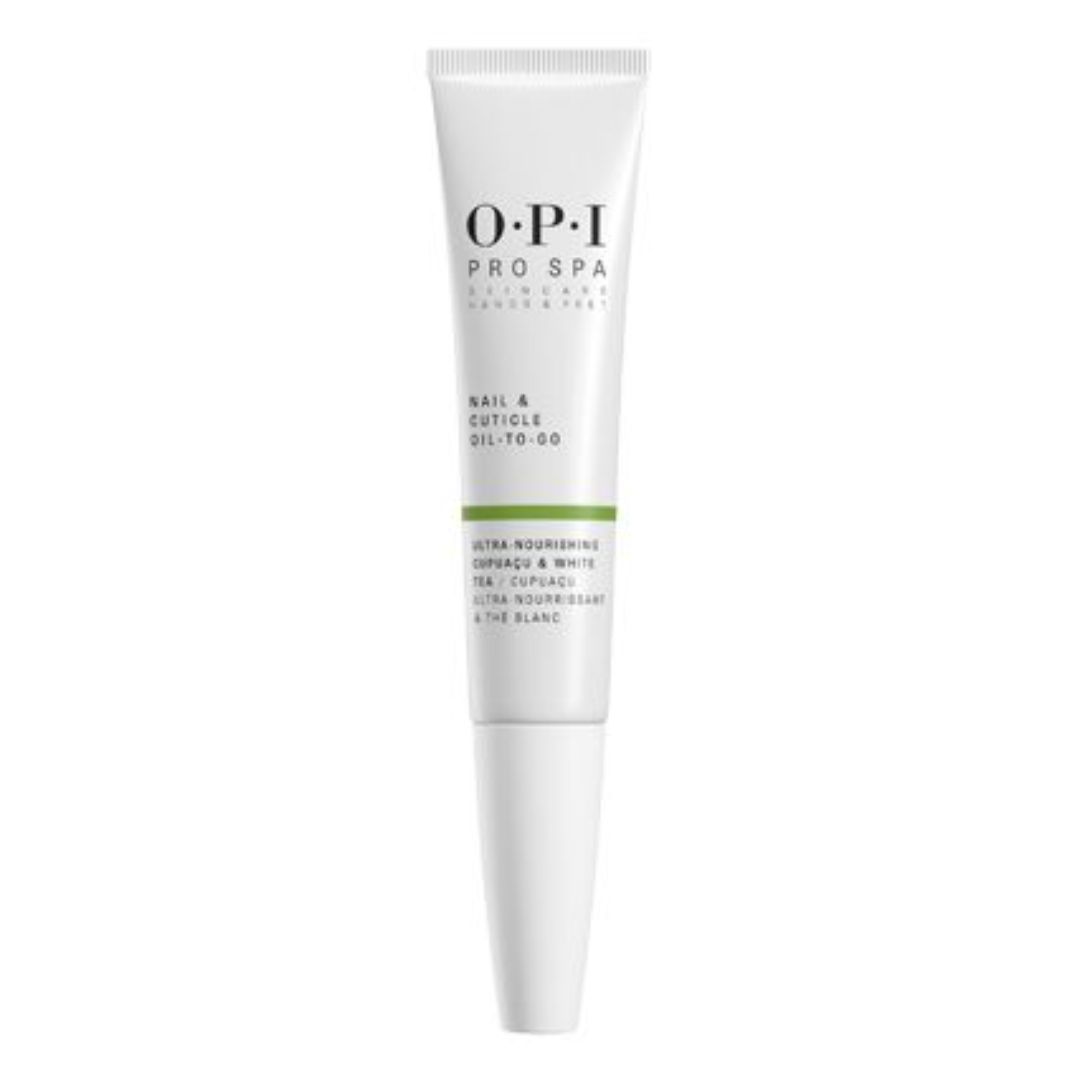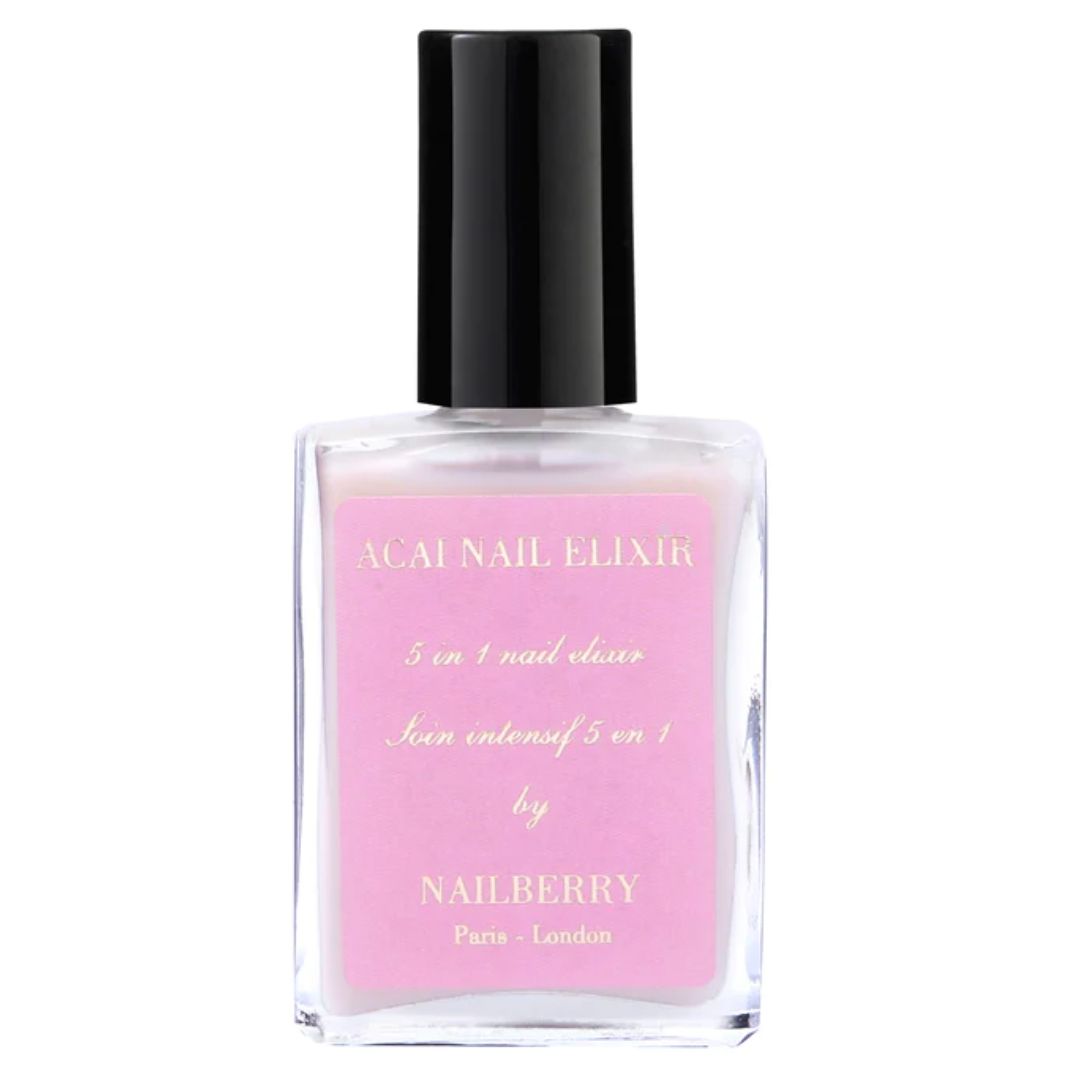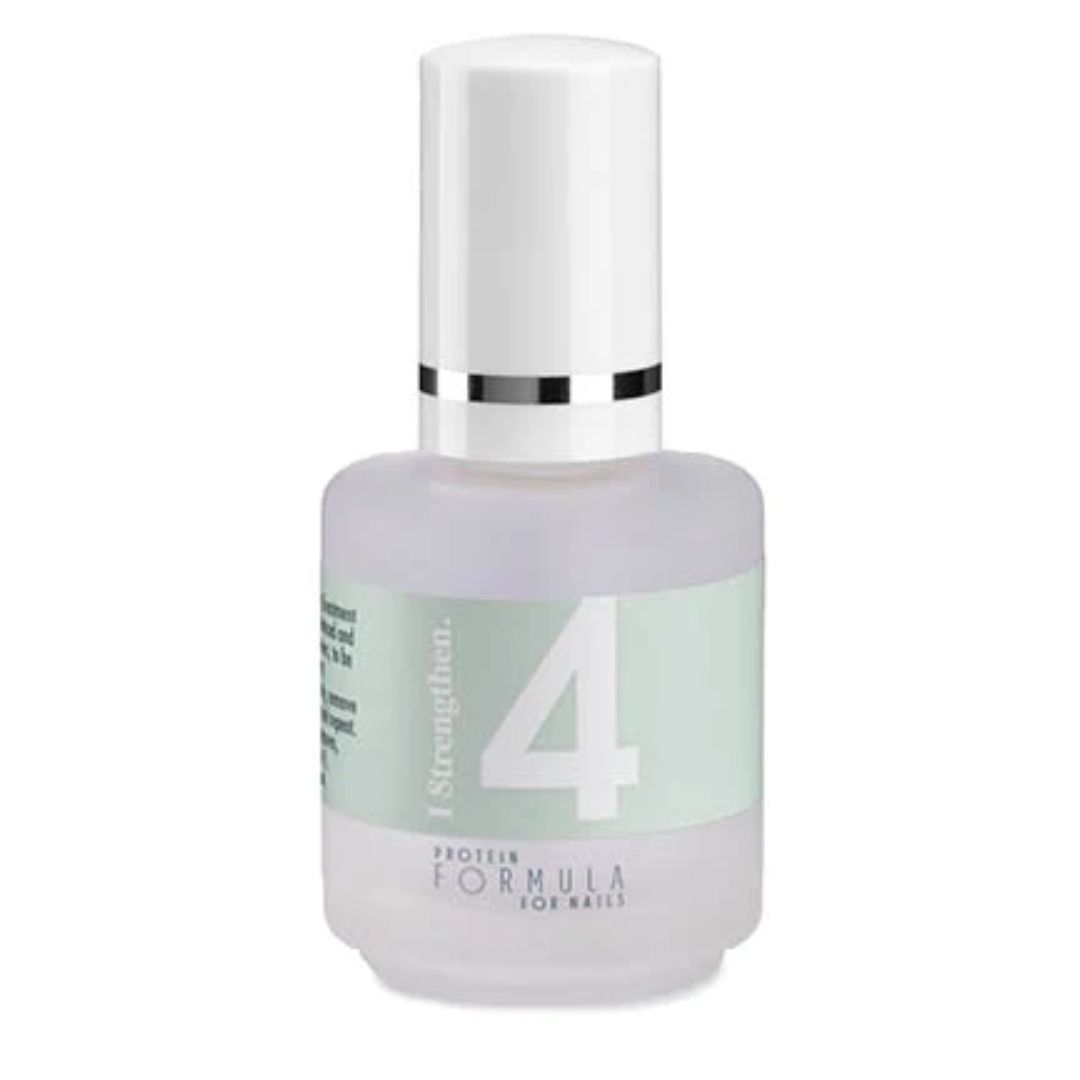Experts say these are the 9 tips you need to follow for the healthiest nails of your life
The best part? None of them are difficult to do

Every nail enthusiast knows that the key to nailing the best nail trends (whatever the type of manicure) is a healthy set of nails underneath. But what exactly constitutes healthy nails, and how do we get them? As a nail tech myself, I am always on a nail health mission. Although I have a decent knowledge, I still wanted to find out from other industry experts what else I can be doing to improve the health of my digits so that I can experiment top nail art ideas without worry.
I've called in the help of a consultant dermatologist and top nail tech to explain what a healthy and unhealthy nail is, how to spot the signs of concerning nail characteristics, and what the best advice is for keeping nails in tip top shape at home.
What is classed as a healthy nail?
It may seem simple, but it’s important to cover the basics first. “Healthy nails are considered to be smooth with no discolouration,” explains Dr Eirini Merika, consultant dermatologist at Montrose London. “Normal appearance and growth depends on the integrity of several components such as the tissues surrounding the nail, the bony part of the digit and the nail itself,” she adds.
An unhealthy nail, on the other hand (pardon the pun), can be “brittle, peeling or cracked,” says nail tech Alex Philamond. Dr Merika adds that, “the most common signs of nail disease include nail discolouration affecting the entire or part of the nail, change in the nail thickness (thicker or more brittle nails), and separation of the nail from the surrounding skin or matrix (the area where the nails start to grow).” If there is bleeding, redness, swelling or pain around the nails, Dr Merika says this should raise alarms.
If yours have any of these characteristics though, don’t panic. Alex makes an excellent point. “Of course everyone’s nails differ slightly, and genetics play a big part in this; some scoop upwards, some are slightly ridged or corrugated, but that doesn’t necessarily mean they’re unhealthy,” he says. If you have any concerns, always raise it with your nail tech and, although they should never diagnose, they can advise whether you should visit your GP or be referred to a dermatologist. They will also change your nail plan accordingly.
Common nail conditions
Understanding nail health isn’t just important to, well, having nice nails, but it’s also a window into other health conditions. “The colour, shape, texture and durability of nails may reveal important information about your general health and specific conditions or mineral deficiencies,” says Dr Merika. There are so many conditions that dermatologists sees in clinic. Dr Merika notes the following as being most commonly seen:
- Nail thickening - usually caused by fungal injection, repetitive injury and inflammatory skin conditions.
- Paronychia - inflammation of the cuticle, usually a result of bacterial or yeast infection.
- Fungal infection - presenting with nail discolouration and thickening of the nail; people with diabetes or suppressed immune system are more at risk.
- Ingrown toenails - usually a result of poor trimming, trauma or wearing tight/ill-fitting shoes.
- Nail discolouration - often from nicotine, colouring agents, infections, traumatic nail injuries, some antibiotics and even cancer.
- Brittle nails - associated with lack of lipolic acids, proteins, vitamin A, iron, or calcium.
- White spots or lines - zinc or B6 deficiency.
- Pale, yellow nails - protein or iron deficiencies, liver or kidney disease.
- Slow growing nails - vitamin A or iron deficiency.
- Pitting or ridging of the nail plate - psoriasis or inflammatory arthritis and other chronic, inflammatory conditions of the skin.
- Dark, longitudinal lines - ethnic variation (nearly all Afro-Caribbean people develop black/brown pigmentation of the nail by the age of 50) but it may also indicate some cancers.
- Horizontal ridging - usually a result to be related to repeated nail trauma such as regular manicures.
- Nail thickening, lifting of the nail plate away from the nail bed and inflammation around the cuticle - may be secondary to the application of artificial nails and we see a number of patients who suffer with nail symptoms such as horizontal ridging due to repetitive nail trauma from nail manipulation during manicures, particularly gel manicures.
- Nail staining - surface changes such as ridges and cuticle injuries (from removers and softeners) are frequently seen in association with poor nail care habits, in particular improper use of gel nails or excessive cuticle removal.
- Nail changes may also be the first sign of systemic conditions such as thyroid disease or anaemia, as well as other inflammatory changes such as psoriasis.
What causes nail damage?
Aside from things like injury and health, of which are either unavoidable or need medical attention, it’s often due to improper care. “The damage caused by trauma to the nail plate can also have prolonged detrimental effects on the health of the nail,” says Alex.
Marie Claire Newsletter
Celebrity news, beauty, fashion advice, and fascinating features, delivered straight to your inbox!
Typically, this occurs due to over-filing or buffing, “or when enhancements such as gel or acrylics aren’t removed gently, causing them to become thin, tender and sensitive”, explains Alex. “In this case, you will have to wait for the weakened area to grow out and be replaced by new, healthy nails.” If you like to do a little DIY gel nail moment at home but haven’t had any proper training, this can seriously compromise the health of your nails, so we would always recommend seeing a professional.
In addition, Alex says that dehydration is ruthless for leaving nails peeling and brittle which makes them prone to cracking. “This can often be caused by repeatedly washing and drying, overexposure to harsh chemicals and cold weather.”
Expert-approved at-home nail care tips
We promise it’s not all bad though! You can have beautiful manicures and never compromise the condition of your nails. It’s always best to visit a professional, like myself or Alex, who keeps the health of client's nails as a top priority over anything else and can give consistent advice tailored to the individual.
1. Visit a professional for nail enhancements
The biggest reason nail allergies and sensitivities are on the rise is due to improper application of professional-only products like gel nail polish. They’re professional-only for a reason. If you’re passionate about doing your gel nails at home, consider a short course (these can even be online) in understanding contraindications and safe handling of the products to avoid issues.
2. Use cuticle oil and treatments
Nail techs are always banging on about cuticle oil and there’s logic to this. As you'd expect, cuticle oil hydrates the nail bed. Doing this helps promote growth, prevents hangnails and generally improves the appearance of nails. "I prescribe oiling your nails and surrounding skin at least once AM and once PM, but honestly the more the better," says Alex. Plus, oiling your cuticles helps your gels last longer as it keeps them flexible and less prone to breakage.

"The Little Treasure Cuticle Oil has a complex blend of multivitamins that quenches your nails and the surrounding skin," says Alex.

If you're a little lazy with cuticle oil application, I always recommend people grab a cuticle oil pen. I try to dab some on whenever I apply lip balm—it only takes a second.

"I love the brand Nailberry, they have a unique formula that enables oxygen and water molecules to pass through the polish, preventing the nail from getting dehydrated," says Alex. He notes that this 5-in-1 treatment actively repairs damaged and peeling nails, leaving them feeling strong.

I really rate the Protein Formula polishes for keeping up with nail care in between manicures. There are four to choose from: Maintain, Grow, Hydrate and Strengthen. While I like all of them, I find Strengthen does a fantastic job for brittle nails that need a bit of TLC.
3. Adjust your nail length according to your lifestyle
This may seem obvious, but Alex makes an excellent point about keeping nails to “an active length that is befitting for your lifestyle.” If you have an active job, don't have long, acrylic nails where they're more prone to damage. If you're often getting into accidents and experiencing breakage, keeping them short is a good idea.
4. Keep up with protein intake
"Following a well-balanced diet is critical for good nail health," says Dr Merika. "The key ingredient for optimum nail health is good quality protein, e.g. animal protein such as chicken, eggs, lean red meat fish, as well as tofu and nuts." She also says that foods containing the trace element silicone are also beneficial, these include cucumber, oats, green leafy vegetables, onions and cereals.
5. Avoid excessive hand washing
Of course, we need to keep up our hygiene but no one needs to be excessively washing their hands (unless their job requires so), if this is the case make sure you’re using a gentle soap and replenishing that moisture loss with a good moisturiser.
6. Avoid direct contact with irritant chemicals
Dr Merika advises to protect your hands using gloves—“cotton underneath plastic, particularly when doing housework.”
7. Jewels not tools
There's a phrase used often when you go through nail school: jewels not tools. “As hard as it is at first, try not to use your nails as tools (opening cans, removing keys from key rings, opening packages), all of these things cause unnecessary microtraumas to your nails, making them more prone to breaking,” says Alex.
8. Avoid using nail polish removal more than twice a month
There’s no need to remove nail polish more than twice a month as this can cause over-drying and leave the nails feeling brittle, dehydrated and damaged.
9. Seek the advice of a dermatologist who specialises in nail problems if you notice any changes to your nails
Although this is our final note, it really is the most important. If you see any changes in your nails or are worried about anything, please visit your GP or, even better, a dermatologist if you can. Nail changes can be a signal to other, more serious, health implications so it’s important to never ignore worries you have.
Tori is a freelance beauty journalist and contributor for Marie Claire. She has written for various titles, including Allure, Glamour, Elle, Refinery29, Brides, and more. Currently training to be a nail tech, Tori is a total nail enthusiast and always has time to talk all things nail art. When she’s not writing about beauty and testing products, Tori can be found walking her rescue dog Pip, drinking great coffee, and eating as many croissants as humanly possible.
-
 How are Trump’s tariffs affecting the fashion industry?
How are Trump’s tariffs affecting the fashion industry?The fluctuating situation in the US is having very real consequences
By Rebecca Jane Hill
-
 Here's every character returning for You season 5 - and what it might mean for Joe Goldberg's ending
Here's every character returning for You season 5 - and what it might mean for Joe Goldberg's endingBy Iris Goldsztajn
-
 Celine's new Selfridges pop-up is an ode to summers on the French Riviera
Celine's new Selfridges pop-up is an ode to summers on the French RivieraA one-stop-shop for the ultimate holiday wardrobe
By Clementina Jackson